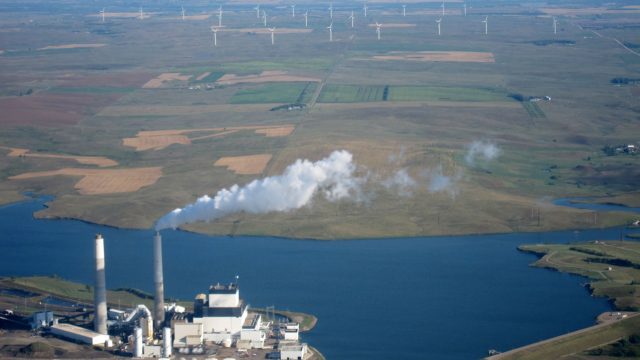Jason Bohrer: The EPA's Energy Drought

Want a preview of what’s to come with the EPA’s proposed emissions rules for carbon dioxide and their impacts on electricity? Look no further than the State of California and the current situation with another critical element of our standard of living – water.
There’s no disputing the fact that California is experiencing one of the most severe droughts in recorded history. What can be debated is that the effects of the drought have been compounded by failures in policymaking and regulations that have forced billions of gallons of this critical resource to be flushed into the ocean for wildlife purposes, and have not allowed for the construction of new water storage and other infrastructure to keep up with a growing population.
[mks_pullquote align=”right” width=”300″ size=”24″ bg_color=”#000000″ txt_color=”#ffffff”]As the State of California announces first-ever mandatory water restrictions that will even go so far as to fine long showers, the EPA is gearing up to finalize rules that seek to implement similar measures on our national electric grid.[/mks_pullquote]
As the State of California announces first-ever mandatory water restrictions that will even go so far as to fine long showers, the EPA is gearing up to finalize rules that seek to implement similar measures on our national electric grid.
Utilities have spent over a century building up our energy infrastructure. Stable, reliable, and affordable baseload electricity was put into place by hydroelectric dams, as well as nuclear and fossil-fuel fired power plants, including coal, oil, and natural gas. This has served as the backbone of our electric grid, delivered to homes and businesses by millions of miles of transmission and distribution lines. In recent decades, utilities have begun to develop renewable resources such as wind, solar, biomass, and geothermal power. Since these sources are intermittent in nature, it takes careful management of the grid to integrate this power while ensuring that baseload power remains online to keep the lights on 24/7.
The EPA’s regulations, however, would upend this entire system, over 100 years in the making, by the year 2030. The proposed requirements for reducing emissions and operating existing fossil-fuel fired power plants are unfeasible and based on uninformed assumptions. The EPA is also relying on unrealistic assumptions about expanding renewable power generation and what it calls “demand-side energy efficiency,” or reducing energy demand from consumers. Just as the State of California has resorted to a last ditch effort to force its citizens’ to reduce water use, the EPA wants to limit how much electricity you are allowed to use after a shortage of its own creation.
The only difference between the situation that has transpired with water in California and the EPA’s proposed energy drought is that the EPA can still withdraw its rules. Instead of a government-mandated shortage, the EPA can develop responsible regulation that will ensure utilities and the energy industry have sufficient time to develop technology and reduce emissions while still producing abundant and affordable electricity.




